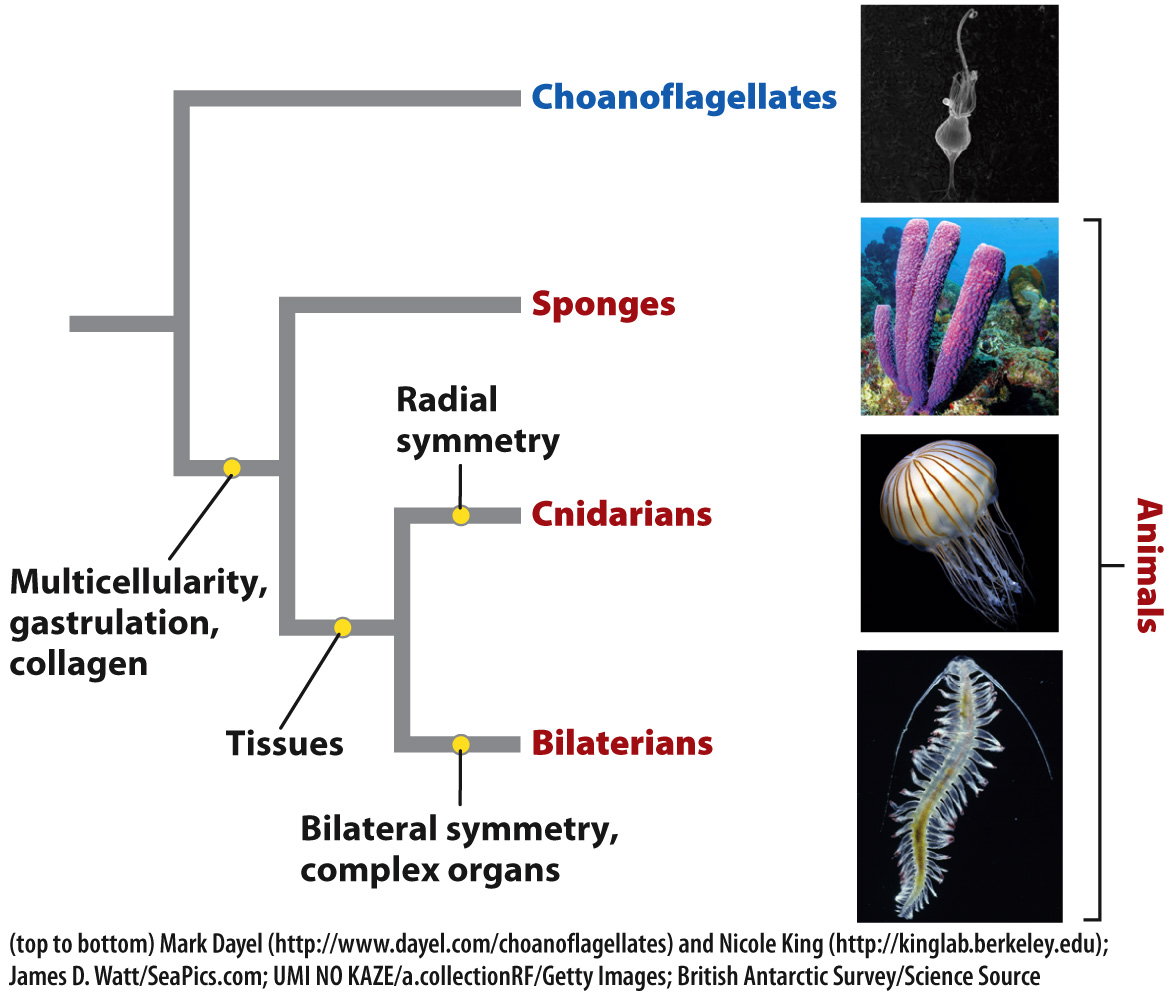Phylogenetic trees propose an evolutionary history of animals.
Before considering the evolutionary tree of animals, it is useful to begin by asking what an animal is. What features differentiate animals from all other organisms? And, more specifically, what features differentiate animals from their nearest relatives?
As introduced in Chapter 27, the organisms most closely related to animals are choanoflagellates, a type of protist. This relationship was first proposed in the nineteenth century on the basis of cell shape and was confirmed in the twenty-
Animals can therefore be described as multicellular heterotrophic eukaryotes that form a gastrula during development. Other features, both molecular and biochemical, also distinguish animals from other organisms, but basic features of nutrition and development set the stage for considerations of animal diversity.
In Chapter 23, we saw that the fundamental mechanism by which biological diversity increases is speciation, the divergence of two populations from a common ancestor. Played out repeatedly through time, speciation gives rise to a treelike pattern of evolutionary relatedness, with more closely related taxa branching from points close to the tips of the tree and more distantly related taxa diverging from branch points nearer its base. Distinctive features of organisms, called characters, evolve throughout evolutionary history, and the time when they arose can be estimated from their shared presence in the descendants of the population in which the character first evolved.
With these points in mind, we can read Fig. 44.1 as showing that animals are closely related to choanoflagellates, but differ from them in the presence (among other features) of persistent multicellularity, the formation of a gastrula during early development, and the synthesis of the structural protein collagen. Cnidarians (the phylum that contains jellyfish and sea anemones) and bilaterians (most other animals, including humans, insects, and snails) are differentiated from sponges by the presence of well-

Note that this figure does not tell us that sponges are older than more complex animals. Instead, it says that sponges and more complex animals diverged from a common ancestor, but it doesn’t tell us what that common ancestor looked like. Similarly, cnidarians and more complex animals with bilateral symmetry diverged from their last common ancestor at a single point in time and so are equally old, but structurally distinct.